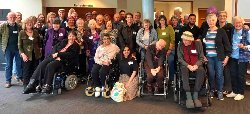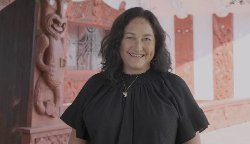Vanuatu Headless Bodies To Be Analysed At Otago
Vanuatu Headless Bodies To Be Analysed At Otago
University
A University of Otago researcher may be about to unravel the mysteries shrouding Vanuatu’s first human settlers by analysing the 3000-year-old headless remains unearthed in the South Pacific’s oldest cemetery ever found.
Believed to be one of the most significant finds in the area, the remains of the 13 decapitated skeletons are those of Polynesian ancestors known as the ‘Lapita people’ and are the earliest human remains ever found there. Mysteriously, the skeletons seem to have had their heads removed post-burial.
Dr Hallie Buckley from the University of Otago’s Department of Anatomy and Structural Biology excavated the skeletons and will lead a team of international experts in analysing the bones. She describes the find as “extremely exciting” and one that will be crucial in our understanding of life in the South Pacific 3000 years ago.
“This site is very unusual as previously discovered human remains associated with Lapita pottery are mixed with more recent layers or contain samples of only single individuals or fragmented bone,” she says.
“We now have 13 individuals from the same site, so our investigations will hopefully reveal many more clues to how these people lived, what foods they ate, and because there were no humans in Vanuatu prior to Lapita arrival, how well they adapted to the pristine island environment when they first arrived.
“This discovery represents an amazing opportunity to explore the incredibly complex interaction between humans and the environment in prehistory.”
Buckley continues: “When I excavated the bodies, I noticed that some of the individuals were very robust with large muscle attachments, indicating that the Lapita people were strong and lived active lifestyles. This is something we will investigate further to begin to build a profile of the lifestyles of prehistoric Pacific Islanders.
“We’re also particularly interested to discover what the Lapita people looked like, whether they were more Melanesian or more South East Asian looking. By analysing the shape of their bones and skulls we will hopefully be able to say more about where the Lapita people originally came from.”
The Lapita remains were found among pieces of pottery, dating back to 1200 BC, which is 200 years earlier than it was previously believed the Lapita people arrived in Vanuatu.
“We are not yet sure of the significance of the pottery found in the burials,” Buckley continues. “We think perhaps the pots were part of the mortuary ceremony.
Buckley says she can’t believe how fortuitous it is that this archaeological site was ever discovered. A bulldozer driver building an embankment for a prawn farm came across it accidentally and alerted staff from the Vanuatu National Museum.
They then contacted Dr Stuart Bedford from the Historic Places Trust, Auckland, who co-directed the dig with Professor Matthew Spriggs at the Australian National University.
“When you have a decent-sized island like Efate in Vanuatu, it’s incredibly difficult to pinpoint exactly where the ancient tribes may have buried their people,” Buckley concludes.
It is not known why the skulls were removed from the grave sometime after death and shell bracelets were put in the skulls’ place. None of the heads have been uncovered apart from three, which were placed across the chest of a headless man with a severely broken leg. The suggested explanation is that the man was a chief and the three heads belonged to members of his family.
The remains will be transported to the University
of Otago in the coming months where some of the
investigations will take place. Samples will be sent to
Britain where a researcher will attempt to identify the
ancient DNA of malaria in the bones. Other DNA studies will
also be attempted which may help with answering questions
about where these people originally came from. An
investigation into the chemical make up of the bones will be
carried out to understand more about the diet of the Lapita
people.


 Vegetables NZ: Fresh NZ-grown Vegetables Now Even Better Value For Cash Strapped Kiwis
Vegetables NZ: Fresh NZ-grown Vegetables Now Even Better Value For Cash Strapped Kiwis AgriFutures: Supporting The Next Generation To Succeed In Agriculture And Horticulture
AgriFutures: Supporting The Next Generation To Succeed In Agriculture And Horticulture Asian Aotearoa Arts: New Crops, Conversations And Illuminations: Asian Aotearoa Arts 2024 Full Programme Announcement
Asian Aotearoa Arts: New Crops, Conversations And Illuminations: Asian Aotearoa Arts 2024 Full Programme Announcement Arts Access Aotearoa: Accessing The Benefits Of Music Therapy
Arts Access Aotearoa: Accessing The Benefits Of Music Therapy University of Auckland: New Approach To Increase Māori And Pacific University Success
University of Auckland: New Approach To Increase Māori And Pacific University Success NZSO: Debut Of Star Korean Conductor For Tchaikovsky Showstopper
NZSO: Debut Of Star Korean Conductor For Tchaikovsky Showstopper